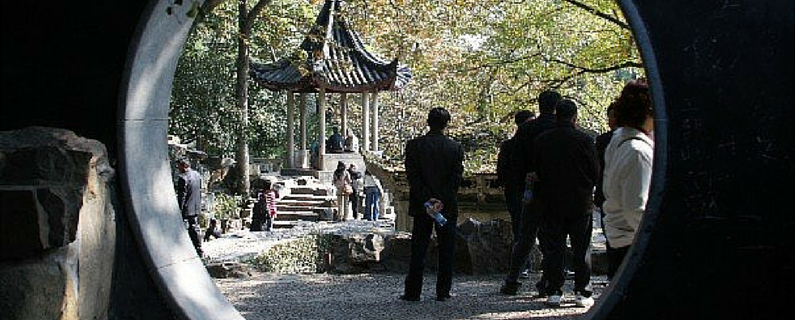The thought of human slavery is abhorrent to billions of people around the world, yet the practice continues to flourish. More than two-thirds of the world’s slaves (14.2 million) are industrial workers, who labor in deplorable conditions for little or no pay and with no resources available to escape their circumstances. One in five (22 percent) bondage workers are sex slaves, and 2.2 million (ten percent) provide slave labor for corrupt government agencies.
Laws Against Slavery
It’s not that there are not enough laws against the practice. Before and during the 20th century, national and international organizations have promulgated policies, rules, and laws against slavery, from the Slavery Convention in 1926 through to the Protocol to Prevent, Suppress, and Punish Trafficking in Persons especially Women and Children in 2000. The United Nations coordinates the anti-slavery efforts of its member-states through its Global Initiative to Fight Human Trafficking, its High Commission on Human Rights, and its Office on Drugs and Crime (UNODC). Despite these laws, and the international agreement to prohibit slavery, prosecuting the crime is difficult and rare. In 2014, around the globe, only 10,051 cases were prosecuted, and of those, only 4,443 lead to convictions.
Why Human Trafficking Thrives
Many observers wonder why the trafficking trade continues to thrive in the face of its nearly universal condemnation. One word summarizes the answer: money. The international slave trade is believed to bring in more than US $150 billion each year. Every region has its share of the slave trade, but 56 percent of the total global number of slaves – more than 11 million people – are in the Asia-Pacific region. Half of those (56 percent) are slaves in their home country. In industry terms, slave labor accounts for US $43 billion annually in the construction, agriculture, manufacturing, and mining industries, and almost US $100 million in the sex trade industry.
Bribery to Corrupt Officials is the Trafficker’s Biggest Cost Factor
It’s not just the traffickers who are getting rich, however. A 2011 UNODC paper reviewed the connection between corruption and human trafficking and determined that ” … corruption is probably the most important factor in explaining human trafficking.” Countries that are the most lax about enforcing anti-corruption laws are also lax on enforcing their anti-slavery laws. Players within those countries that accept bribes, ignore laws, or manipulate industry sectors for financial gain profit as much from slavery as do the people responsible for selling and buying the slaves.
To track how corruption contributes to “trafficking in persons,” the UNODC first defined the crime, then distinguished the chains in which the corruption activity occurred.
The definition consists of three parts:
- the act of taking or receiving a person by
- means of force, coercion, or abuse of vulnerability, for the
- purpose of exploitation, including sexual, forced labor and organ removal exploitation.
It is the nature of the participants in the trafficking chains that generates the most concern, however, and provides a primary reason why eradicating the practice is so difficult. According to the UNODC:
- in the “Trafficking of Humans” chain, actors complicit in the crime include (but are not limited to) customs and border officers, consulate personnel, armed forces, public and private officials, travel agencies, and even financial institutions (see below).
- In the “Criminal Justice” chain, corrupt actors can be politicians, police officers, immigration officials, defense lawyers, prosecutors, judges, and security personnel.
At each contact point, people in these roles turn their backs on the trade in exchange for money, political favors, or other personal rewards.
The UNODC report concludes that organized trafficking cartels require systemic corruption at every level of their activity and that the cost to develop and maintain that corruption is “possibly the main cost factor” for traffickers.
Banks Profit, Too
Regarding the role of financial institutions in the trade, many of these entities are complicit in the crime because they routinely launder slave-trade profits into legitimate funds. In March of this year, the Associated Press reported that the Chinese banking community has become a hub for laundering foreign criminal profits. Cartels in Europe, Latin America, and the United States deposit illicit funds into Chinese and Hong Kong banks, then use the funds to purchase legitimate products for shipment overseas. The U.S. State Department reproached the country for failing to cooperate sufficiently with agreed-to investigation protocols. Europe has no such agreement with China, so they have no capacity to follow the criminal funds from their country past that border.
International Producers Face Legitimate Concerns
International producers should always be on the look-out for the possibility of slave labor within their Chinese supply chains. The region has more slaves than any other on earth, and the capacity for corruption and money laundering is well known. Enterprises that discover the practice within their corporate footprint often suffer both economic and reputational damages, from which some companies never recover.
The Conference Board China Center for Economics and Business urges every off-shore manufacturer to be vigilant about enforcing anti-slavery policies in their Chinese contracts. The Board recommends a thorough background check and investigation of every element of the Chinese production facility, including their suppliers and sub-contractors. It also suggests maintaining a discerning eye on internal and cross-border developments, to ensure that changing standards don’t expose the company to emerging risks.
In truth, not all Chinese industry participants are corrupt. In my close to 2 decades working with the Chinese and in Asia, I’ve met many honest and honorable people and business leaders who are invested in maintaining high ethical standards throughout their facilities.Getting appropriate help for you company to identify those factories that pose these types of ethical risks is crucial though. Finding those that have demonstrated their commitment to keeping their facility and supply chains free from the scourge of slave labor, is a good first step.
I have been advising off-shore producers about sourcing products in China and Asia for almost 2 decades. In my book, you can learn how to avoid some of the pitfalls. To mitigate common risks in your supply chain, including Slavery, contact me today. I can be reached at (+61) 413 089 020 or via email: carsten@vantagecompliance.com



